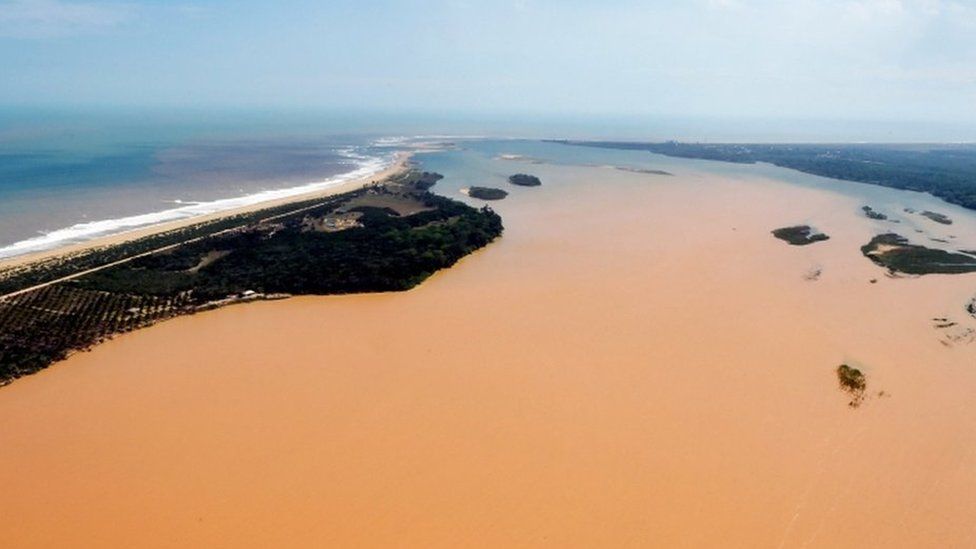BHP rebuts UN 'toxic waste' claim at Brazil dam
- Published

Australian mining giant BHP says mud spilled by the devastating collapse of a dam at a Brazilian mine is not toxic.
On Thursday the UN said the dam burst at the Samarco mine unleashed a flood equivalent to "20,000 Olympic swimming pools of toxic mud".
The incident earlier this month in Minas Gerais state left 13 people dead, devastating several villages. Eleven people are still missing.
The noxious river has trailed 500km from the mine into the Atlantic Ocean.
The mining giant said in a statement the waste water in the dam, a by-product of iron ore extraction known as tailings, did not pose any threat to humans.
BHP said: "The tailings that entered the Rio Doce were comprised of clay and silt material from the washing and processing of earth containing iron ore, which is naturally abundant in the region."
He said the waste would "behave in the environment like normal soils in the catchment".
Arsenic
The dam at the Samarco mine, which is jointly owned with Brazil's own mining giant Vale, burst on 5 November.
The UN and Brazil's environment agency have both tested the red-looking sludge, and say it it contains toxic chemicals.
The state water agency said it found arsenic levels at 10 times above the legal limit and other harmful metals.
The UN human rights agency also said that BHP and Vale had not taken steps to prevent the harm caused by the mine waste.
The country's environmental agency Ibama has fined the iron-ore mine owners over Brazil's "worst mining accident".
Residents said there was no warning. They had to run for their lives as they realised the Fundao dam had collapsed.
Samarco has tried to protect plants and animals by building barriers along the banks of the river.
The company agreed last week to pay the Brazilian government 1bn reais (£170m; $260m) in compensation.
The money will be used to cover the initial clean-up and to offer some compensation to the victims and their families.
- Published25 November 2015
- Published17 November 2015
- Published9 November 2015
- Published6 November 2015